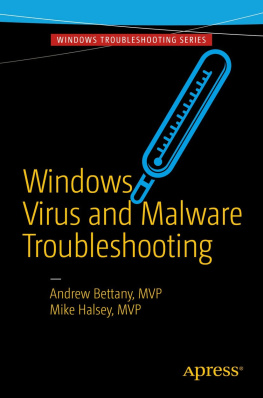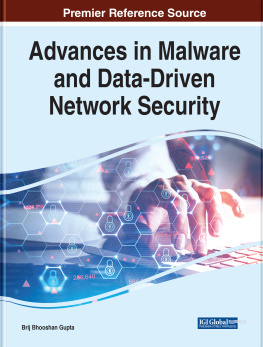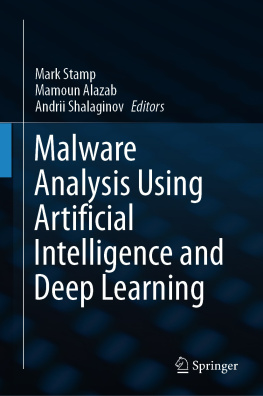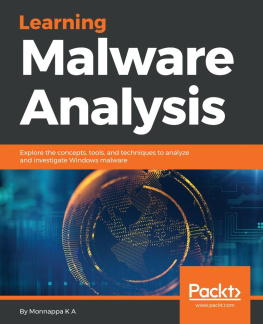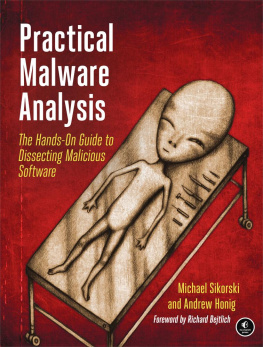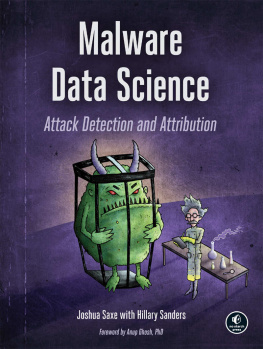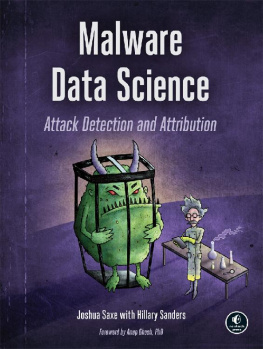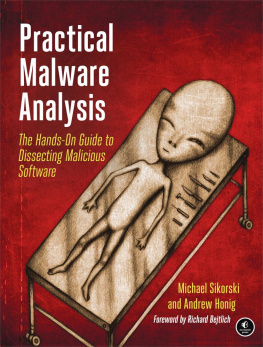A Brief History of Malware
This might come as a surprise, but the earliest computer viruses were written for the Apple II and Macintosh computers . They would write themselves into the boot sector of a floppy disk, so they would execute when the disk was read.
The popularity of the IBM PC and MS-DOS caused a boom in viruses, as computer use grew within businesses. Viruses were tiny in size, when compared to the malware of today, and typically performed small tasks, from deleting files to rewriting the PCs BIOS, so as to prevent the machine from starting, and then propagating further by copying themselves to every floppy disk placed into the machine. The first virus I was infected with, on an Olivetti PC back in 1991, played Yankee Doodle Dandy to me every day at five oclock but was otherwise benign.
The Morris Worm was the first example of an Internet virus. Discovered at the end of 1988, it was written by a graduate student at Cornell University (Ithaca, New York) and launched from the computers of the Massachusetts Institute of Technology.
Although it was not originally written to cause any damage but to gauge the size of the Internet for its creator, an error in its code turned it from a harmless worm into an infectious denial-of-service tool that took significant time to remove from the thousands of computers it infected.
Since then, there have been many high-profile viruses in the wild, including the infamous Stuxnet worm that was allegedly created by the US and Israeli intelligence services to infect Iranian government computers and report on the countrys nuclear program. The Code Red worm of 2001, which defaced web sites and launched denial-of-service attacks, was at one point infecting more than 300,000 computers every day.
The rise of bots and ransomware took malware infection to a new level. A bot would infect thousands, sometimes even millions, of computers and then sit silently waiting for instructions. Control of the infected PCs would then be sold on the dark web to the highest bidder, who could then record keystrokes (such as usernames and passwords) from the PCs, get backdoor access to them, or launch distributed denial-of-service (DDoS) attacks that would flood Internet services and specific companies web servers with so much traffic, and over such a prolonged period, that the servers would fail.
Ransomware, which encrypts the files and documents of individuals and companies, is widely reported to be raking in millions of dollars for its creators every year, as universities, hospitals, major corporations, and even governments secretly pay costly ransoms for unlock keys.
Today, malware exists on every computing platform and operating system. The popularity of Googles Android OS makes it a very tempting target, and even the advanced security of Apples iOS and OS X systems offers no guarantee of protection, because, as Ill explain shortly, its the user and not the software thats commonly attacked.
Internet of Things (IoT) devices are a new route of attack into your network or home, as they can often come with very lax, or even zero, security. Once connected to your network and your router, they can be used as gateways through which other devices can also be accessed. Often, physical access to the IoT device will be required to infect the device, though its not unheard of for viruses to be pushed through firmware updating. If you use IoT devices, its always wise to change the default administrator username and password and to check that the manufacturer has taken security seriously when designing the firmware.
For the purposes of this book, however, Ill be focusing on Windows 10 PCs and networks, which include servers, desktops, laptops, ultrabooks, and tablets, primarily running on Intel processors.

